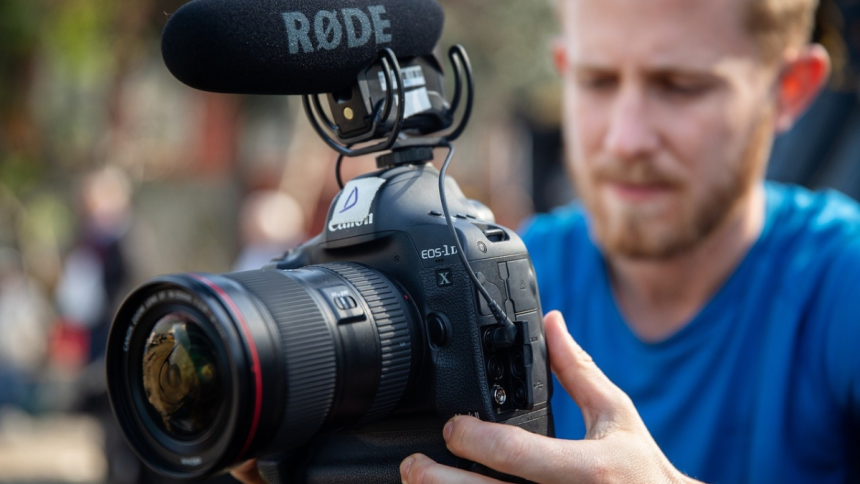Creating a cinematic look is within reach for more filmmakers, photography enthusiasts, and content creators eager to elevate their visual storytelling. As technology advances, the barriers to achieving high-quality visuals without cumbersome equipment have significantly diminished. This guide highlights the essential techniques and camera settings that turn everyday footage into cinematic masterpieces.
Understanding the Cinematic Look
Achieving a cinematic look involves more than just pointing a camera and shooting. It requires a keen understanding of visual aesthetics and camera control. Cinematic aesthetics refer to the visual style choices that create the ‘film-like’ quality many seek. Incorporating the appropriate camera settings is essential to ensure your footage meets cinematic standards, which can be effectively achieved with a compact full-frame cinema line camera like the Sony FX3.
Defining Cinematic Aesthetics
The term cinematic aesthetics relates to the specific visual qualities that define a cinematic look. These include aspects like colour grading, depth of field, and motion blur. Colour grading adjusts the colour tones to create mood and atmosphere. A shallow depth of field focuses on a subject, blurring the background to create a dramatic effect.
Also, the use of motion blur enhances the fluidity of movement, contributing to the overall aesthetic. Films often utilise slow-motion and time-lapse techniques to capture emotions and actions with impact. By understanding these visual elements, creators can better plan their shots to meet cinematic standards.
To further explore cinematic aesthetics, check out this guide to cinematic shots, which offers insights into achieving these visual styles with various camera techniques.
Importance of Camera Settings
Camera settings are fundamental to replicating a cinematic look. They control how the camera interprets light and movement, affecting the final image quality. Aperture settings, for instance, influence depth of field. A lower f-stop value allows more light into the camera and creates a blurred background effect.
Shutter speed controls the exposure time, impacting motion blur and image sharpness. A slower shutter speed can create a smoother motion effect. Meanwhile, ISO settings adjust the camera’s sensitivity to light. Lower ISO values are preferable for reducing noise in well-lit conditions, while higher values are useful in low-light environments.
White balance adjusts the colour temperature, ensuring that colours appear natural under different lighting conditions. Mastering these settings is crucial for achieving consistent, professional results.
Essential Filmmaking Tips
Creating cinematic footage involves more than just the right equipment. Mastery of lighting, framing, and composition is essential. These elements work together to enhance the narrative and visual appeal of your film. This section provides practical tips to elevate your filmmaking skills.
Mastering Lighting Techniques
Lighting is a critical component of filmmaking. It sets the mood, highlights subjects, and influences the overall aesthetic. Three-point lighting is a standard lighting technique that uses key, fill, and backlight to create a balanced scene.
Key light is the primary source, illuminating the subject. Fill light reduces shadows and softens the look. Backlight adds depth by separating the subject from the background. The placement and intensity of these lights can dramatically alter the scene’s mood. Natural lighting can also be harnessed effectively, with golden hour lighting providing soft, warm tones.
Framing and Composition Strategies
Framing and composition involve arranging visual elements within the frame to guide the viewer’s eye and support the story. The rule of thirds divides the frame into nine equal sections, helping position the subject in a visually appealing manner.
Leading lines draw the viewer’s attention toward the subject, while symmetry can create visual harmony. Negative space allows the subject to stand out against a less busy background, creating focus and impact.
Foreground and background elements add depth and context to a scene. Use these strategies to create compelling compositions that enhance storytelling.
Accessories for Compact Cameras
Enhancing your compact camera setup with the right accessories can significantly boost your filmmaking capabilities. Lenses, filters, and stabilisation tools are essential for achieving a cinematic look. This section outlines key recommendations for accessorising compact cameras.
Must-Have Lenses and Filters
Lenses and filters are vital in shaping the visual output of your camera. Prime lenses offer fixed focal lengths with wider apertures, ideal for achieving a shallow depth of field. Zoom lenses provide versatility in framing and composition without changing lenses.
Polarising filters reduce glare and enhance colour saturation, while ND filters allow for wider apertures and slower shutter speeds in bright conditions, creating smooth motion effects. These tools can transform everyday footage into cinematic masterpieces.
Tripods and Stabilisation Tools
Stability is key to cinematic footage. Tripods provide a steady base for static shots, essential for maintaining focus and composition. Gimbals offer dynamic stabilisation, allowing smooth movement shots without camera shake.
Shoulder rigs enable versatile handheld shooting, while monopods offer a balance between mobility and stability. These tools help achieve professional-grade results by minimising unwanted motion and enhancing shot consistency.
To select the best stabilisation tools, consider your shooting style and environment. Compact options are ideal for filmmakers on the go, ensuring stability without the bulk.
Achieving a cinematic look is well within any filmmaker’s reach. By immersing yourself in the principles of cinematic aesthetics and honing your camera settings, you can push your limits and take your footage to new heights. It’s all about amplifying your storytelling and crafting an engaging visual journey. Dive in, experiment, and let your filmmaking creativity shine!
Lynn Martelli is an editor at Readability. She received her MFA in Creative Writing from Antioch University and has worked as an editor for over 10 years. Lynn has edited a wide variety of books, including fiction, non-fiction, memoirs, and more. In her free time, Lynn enjoys reading, writing, and spending time with her family and friends.















